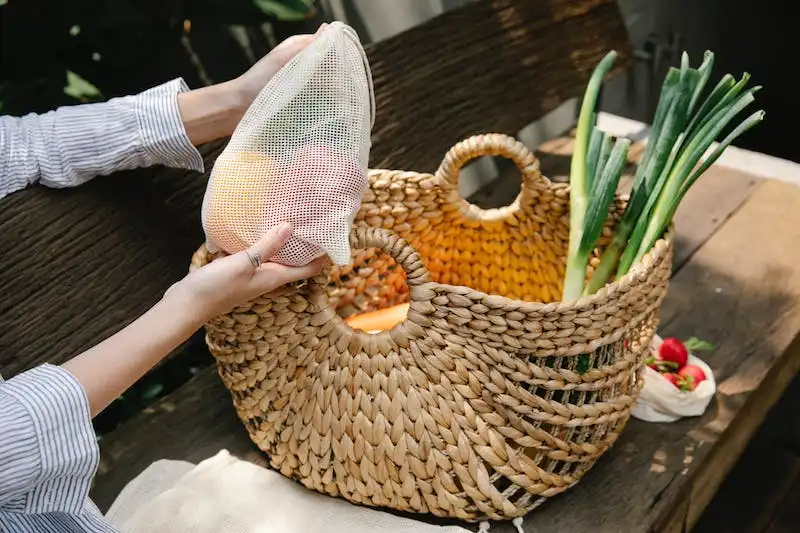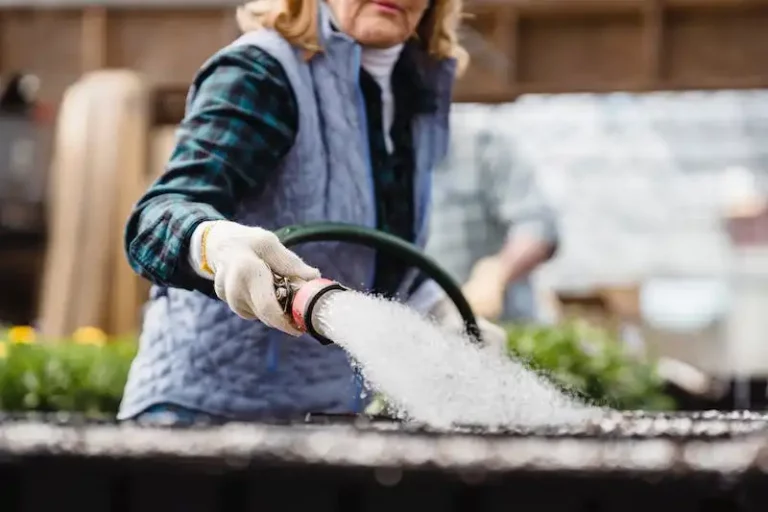If you’ve ever planted coleus, then you know the danger: once you start, you’ll want to fill every nook and cranny in your garden. Coleus plants are quite addictive and it’s easy to see why. Their colorful foliage adds pockets of interest and helps to bring life to even the deepest, darkest corners of your yard. What’s more, coleus is known for its potential to grow quite tall, reaching heights above many other plants.
So, what’s the secret to growing coleus? Well, first you need to choose the right location. Coleus plants thrive in bright, sunny spots where they can receive approximately six hours of full sunlight each day. They aren’t cold hardy, so they may not survive in all climates. However, in warmer regions, they can be grown outdoors year-round. If you live in a colder climate, you can still enjoy coleus plants by growing them in containers and bringing them indoors before the first frost.
Another important consideration when growing coleus is soil. They prefer well-draining soil that is rich in organic matter. You can improve the soil by adding compost or aged manure before planting. Coleus plants also require regular watering, especially in hot, dry weather. Keep the soil consistently moist, but not waterlogged, as coleus plants don’t tolerate wet roots.
To propagate coleus, simply cut a stem approximately 4-6 inches long just above a leaf node. Remove the lower leaves and place the cutting in a glass of water. After a few weeks, roots will begin to form and you can transfer the cutting to a pot with soil. Once the new plant develops roots and starts to grow, you can transplant it to a larger container or into the ground.
When it comes to fertilizing coleus, a general-purpose fertilizer will do the trick. Apply it every 2-4 weeks during the growing season. Be sure to follow the manufacturer’s instructions for the correct amount and frequency. Over-fertilization can lead to leggy plants with few leaves.
Overall, coleus plants are a great addition to any garden. They are easy to grow, have stunning foliage colors and patterns, and can be used as a focal point or as a contrast among other plants. Whether you choose to grow them in containers or in the ground, you can enjoy the beauty of coleus throughout the year.
How to Grow Coleus
When it comes to caring for and making the most of your coleus plants, there are a few important factors to consider. Coleus is a beautiful and vibrant perennial plant that can brighten up any garden or indoor space with its stunning maroon, green, and orange foliage. Here is some information on how to effectively grow coleus:
- Planting: Coleus plants can be grown from seeds or cuttings. The best time to plant them is in the spring, once the danger of frost has passed. They can be planted directly into the ground or in containers, but they prefer well-drained soil. Coleus plants are shade-tolerant and thrive in areas with partial sun.
- Watering: Coleus plants need regular watering to keep their roots moist, especially during hot summer months. However, overwatering can lead to root rot, so it’s important to find the right balance.
- Fertilizing: Coleus plants benefit from regular fertilizing. Use a balanced, slow-release fertilizer according to the manufacturer’s instructions to ensure healthy growth and vibrant coloring.
- Spider Mites: Coleus plants are susceptible to spider mites, especially in dry climates. Keep an eye out for any signs of infestation, such as webbing or yellowing leaves. If spider mites are detected, treat the plants with an appropriate insecticide.
- Propagating: Coleus plants can easily be propagated by taking stem cuttings. Place the cuttings in water or a well-drained potting mix until they develop roots. Once the roots have formed, they can be planted in the garden or in containers.
- Companion Plants: Coleus plants make great companion plants for other flowers, such as impatiens, petunias, or begonias. Their vibrant colors and foliage provide a beautiful contrast and enhance the overall aesthetic of the garden.
- Pruning: To maintain a compact shape and encourage branching, it’s important to regularly prune your coleus plants. Pinch back the stems just above a leaf node to promote new growth and prevent them from becoming too tall.
With the right care and attention, your coleus plants will thrive and bring vibrant coloring to your garden or indoor space. Whether you’re looking for a low-maintenance addition to your garden or a stunning houseplant, coleus is a proven winner. Happy growing!
Known for its vibrant leaves and low-maintenance care requirements coleus is a great addition to a garden bed or container–whether it flowers or not
If you are looking to grow coleus, there are a few key considerations you need to keep in mind. Coleus is a fast-growing plant that thrives in sunny locations. It prefers well-draining soil and should be watered lightly but frequently to keep the soil moist. It is also a good idea to fertilize coleus with a water-soluble fertilizer every two weeks.
When planting coleus, choose a spot where it can receive adequate sunlight. Coleus also pairs well with other plants and can be used as a companion plant in garden beds or container plantings. The vibrant foliage of coleus can add a pop of color to any garden.
To grow coleus from seeds, simply plant the seeds in well-draining soil and keep it moist. It is best to start the seeds indoors in late winter or early spring and then move the young plants outdoors once the danger of frost has passed. Coleus can also be propagated from cuttings, making it easy to create more plants from your existing coleus.
When caring for coleus, pruning is important to maintain its desired shape and prevent it from becoming too tall and leggy. You can pinch off the tips of the stems to encourage bushier growth. Coleus is also known for being relatively pest-resistant, but keep an eye out for common garden pests such as aphids or spider mites.
It’s important to be aware that coleus can cause skin irritation in some individuals, so it’s best to wear gloves when handling the plant. Also, coleus has a fascinating background in traditional medicine, with some varieties being used for their medicinal properties.
In conclusion, coleus is a great addition to any garden bed or container. Its vibrant leaves and low-maintenance care requirements make it a winner for both experienced and novice gardeners. So, if you’re looking for a colorful and easy-to-grow plant, look no further than coleus!
Growing Coleus at a Glance
Growing coleus is a great way to add vibrant color and interesting foliage to your garden. These low-maintenance plants are known for their beautiful leaves and variety of colors, including maroon, watermelon, and painted nettle. Whether you choose to grow coleus from seeds or purchase live plants, there are a few key considerations to keep in mind.
- Coleus plants prefer a well-draining soil, so make sure to choose a spot in your garden with good drainage. If you have clay soil, consider adding organic matter or creating raised beds with pockets of well-draining soil.
- Coleus can be grown in both sun and shade, but they tend to develop more vibrant colors when planted in partial shade. Morning sun and afternoon shade is often the best combination for optimal growth.
- Watering is important for coleus plants, especially during hot and dry weather. Be sure to water them regularly, but avoid overwatering, as this can lead to root rot and other diseases.
- Coleus plants are annuals in most climates, but they can be overwintered indoors to survive the winter and be replanted the next growing season. If you choose to overwinter your coleus, be sure to bring them inside before the first frost date.
- Coleus plants are not prone to many pests, but they can sometimes be affected by spider mites. Regularly inspect your plants for any signs of pests, and if necessary, treat them with an appropriate insecticide.
- For a dramatic effect in your garden, consider planting coleus in large containers or using them as a focal point in your flower beds. Their tall stature and vibrant foliage make them stand out among other plants.
- If you’re new to growing coleus, there are many online resources that provide helpful information and tips for success. Learn about their specific care requirements and any diseases or pests to watch out for.
What’s best about growing coleus is that they are very forgiving. Whether you’re an experienced gardener or a first-time grower, you can easily enjoy their beauty. So, choose the right spot in your garden, provide the necessary care, and you’ll have a stunning perennial or annual plant that will thrive and impress!
Coleus Characteristics
Coleus plants are known for their vibrant and colorful leaves, which come in a wide variety of shades and patterns. They are often used as ornamental plants in gardens and landscaping because of their stunning foliage.
Coleus plants are native to the tropical regions of Asia, where they thrive in warm and humid conditions. They can grow up to 3 feet tall, depending on the variety, and have a bushy and compact growth habit.
One of the great things about coleus is that they are easy to grow and care for. They are not picky about soil conditions and can tolerate a wide range of pH levels. However, they do best in well-draining soil that is rich in organic matter.
When selecting a coleus plant, choose one with strong and healthy roots. Avoid plants that are wilting or have yellowed leaves, as this may be a sign of poor health. Look for plants with vibrant colors and sturdy stems.
Coleus plants are shade-tolerant, but they will produce the most vivid colors when grown in a sunny spot. If you are planting coleus in an area with hot and direct sunlight, make sure to provide some shade during the hottest part of the day to prevent leaf scorch.
Coleus plants have a low water requirement and do not like to be overwatered. It’s best to water them deeply, but less frequently. Allow the top inch of soil to dry out before watering again. Avoid watering from above, as this can lead to leaf rot and diseases. Water at the base of the plant instead.
Once planted, coleus plants are relatively low-maintenance. However, they can attract pests such as spider mites and aphids. Keep an eye out for any signs of infestation and treat them accordingly. Regularly inspect the leaves for any signs of damage or discoloration.
Coleus plants are not frost-tolerant, so they need to be protected from cold temperatures. In areas where the winters are mild, coleus can be grown as perennials. In colder regions, they can be grown as annuals or overwintered indoors.
Overall, coleus plants are great additions to any garden or landscape, adding a pop of color and interest. With their unique foliage and easy care requirements, they are sure to be winners in any gardener’s book.
Recommended Coleus Varieties
If you are looking to add some color and vibrancy to your garden, coleus plants are a perfect choice. These beautiful plants are known for their stunning foliage, which comes in a wide range of patterns and colors. While some coleus varieties also produce flowers, most gardeners grow them for their foliage alone.
When choosing coleus varieties for your garden, there are a few factors to consider. First, consider the light requirements of the plants. Some coleus varieties prefer full sun, while others thrive in shady areas. Make sure to choose varieties that will thrive in the specific growing conditions of your garden.
Another consideration is the color and pattern of the coleus leaves. There are varieties with leaves that are deep shades of burgundy, vibrant greens, or multi-colored patterns. Choose varieties that will complement the other plants in your garden and create a visually appealing display.
Some coleus varieties are also known for their resistance to diseases and pests, making them a great choice for low-maintenance gardens. If you are worried about deer eating your plants, there are deer-resistant coleus varieties available as well.
Here are a few recommended coleus varieties to consider for your garden:
Ruby Slipper: This variety has deep red leaves with a green edge, making it a striking addition to any garden.
Electric Lime: As the name suggests, this variety has bright lime green leaves that add a pop of color to any planting.
Chocolate Drop: With its dark chocolate-colored foliage, this variety adds a touch of elegance to any garden.
Wizard Sunset: If you are looking for a variety with vibrant, multi-colored leaves, this is the one to choose. The leaves of this variety are a beautiful combination of red, yellow, and green.
Painted Nettles: This variety has serrated leaves that are painted with green, pink, and purple, creating a stunning display of color.
Regardless of the variety you choose, coleus plants are generally low-maintenance and easy to grow. They perform best in well-drained soil and should be watered thoroughly once a week. Remove any flowers that appear to promote continued foliage growth.
If you want to propagate coleus plants, it is recommended to pinch back young plants to promote bushiness. This will also help prevent the plants from becoming leggy.
In areas where there is a risk of frost, coleus plants should be planted after the last frost date. They can also be grown in containers, allowing you to move them indoors when the weather turns cold.
Now that you have more information about recommended coleus varieties, you can choose the ones that will best suit your garden and add a pop of color to your outdoor space. Happy planting!




